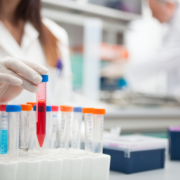MPN Treatment: Why Testing for Mutations Matters from Patient Empowerment Network on Vimeo.
Testing for mutations can influence treatment options available to patients with MPNs and provide a more in-depth understanding into their essential thrombocythemia (ET), polycythemia vera (PV) or myelofibrosis (MF) diagnosis. MPN specialist, Dr. Srdan Verstovsek reviews three key mutations that may impact treatment timing and approaches.
Related Resources
Transcript:
Dr. Srdan Verstovsek:
So, what we know is that ET, PV, and MF, these are these three, and we will use the abbreviations for simplicity, are so-called classic myeloproliferative neoplasms. Myeloproliferative means that it is disease of the bone marrow where cells grow without control.
Now, with ET we have high platelets, but ET is the disease of all the cells. In PV you have high red blood cells, and in many patients you have high white cells and platelets. In myelofibrosis, it’s paradoxically many patients present with too few cells because of reactive bone marrow fibers or fibrosis that limits the growth of the cells.
So, these are the three diseases that have underlying problem, same problem in these three conditions, which is high activity of proteins inside the bone marrow cells, proteins inside the bone marrow cells.
A cascade of protein that makes cells grow without control. We call this a JAK-STAT pathway. I had patients; they say JAK-STAT highway. It’s active all the time. This is a protein JAK too, and then the JAK2, and then other, so we call it JAK-STAT pathway.
It’s super active. Active in normal person when we need to make blood, but in the diseased person, active because of acquired mutations that affect that highway, JAK-STAT pathway or highway.
It makes it work all the time, that’s why we have so many cells. And there are three mutations, which are part of diagnostic process. You test for these. You can test in the blood or in the bone marrow sample, and these are JAK2 mutation, calreticulin mutation, and the MPL mutation.
They are almost always exclusive of each other, and about 90 – 95 percent of patients will have one or the other. They are still very few patients that have none of these three, which is interesting. And we are, in others, looking for other reasons in these few patients.
But one of the three is present, and it’s part of the diagnostic process as well. I didn’t emphasize this before, but it is present as a part of the bone marrow evaluation. That’s where it goes. And it is therefore, helpful to test for it. But one can test for other mutations. Many patients have many other mutations that have nothing to do with the JAK-STAT pathway, and that in large part is responsible why people have different disease ET, PV, or myelofibrosis. We explain this that way because of other genetic abnormalities, other abnormalities that we cannot really describe yet.
Genetic is not the whole picture. There are other parts, I’m sure, in bone marrow environment, in other factors they control the genetic expression, and so on, that contribute why a patient with JAK-STAT hyperactivity has ET, and why another has myelofibrosis.
We don’t really fully understand that. And of course, there is a plethora of patients in between that are not all the same. So, genetics do carry a lot of weight in what happens with the patients, and we do test for that, in addition to testing for JAK2, calreticulin MPL. We test for multiple others. That’s routinely done in academic center. It’s very valuable, and it should be standard practice.
The main utility of widespread testing for additional mutations is to assess the prognosis of the patients. If we are looking at the bone marrow blood chemistry and physical exam, a splenomegaly, and presence of this driver mutation, the JAK, calreticulin or MPL.
We call them driver mutations. They drive that highway. If that is the complexity of the diagnosis, then the next step is, as you remember, the patient will say, “How long I’m gonna live?” Well, obviously, that information comes from the historical experience, and I always emphasize that. But there is valuable information from historical perspective to some intelligence to tell the patients what to expect in general terms. Since the introduction of the genetic testing in academic centers, we have enhanced our ability to prognosticate. Initially, ten or more years ago, we would be looking at the age of the patients, how the patient fares, the symptoms, the anemia, or white blood cell count, or blasts.
These would be kind of common prognostic factors for assessment of the outcome of the patients. But now, we add information on the presence of one or the other of the driver mutations, and the presence of the number and types of these other additional, which call them somatic mutations that have nothing to do with JAK-STAT pathway.
And you can see now how the prognostication also has the flavor of complexity, and it is really not that easy, and we keep moving forward. That prognostication effort is keep moving to assess the outcome of the patients better and better for one particular reason.
If we have we a sense that a patient, based on this prognostic scoring systems, have a poor outcome, which we define as the life expectancy less than five years, then that patient should be referred to the [stem cell] transplant.
And transplant should be done because the benefit of a cure, and the risk of dying through transplant procedure – unfortunately, that’s the reality, is just justifiable if the prognostic scoring system tells you that the life expectancy is less than five years.
That’s the main role for the genetic complexity testing. Looking also at the chromosomes that might be broken. That’s done on a bone marrow sample. And dividing patients in prognosis scoring groups to guide the decision making on the transplant.















